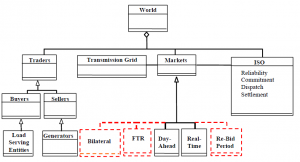Difference between revisions of "Agent-based computational economics"
(→Other computing methods) |
(→Other computing methods) |
||
| Line 46: | Line 46: | ||
Linear Equations and Iterative Methods (Currently empty) | Linear Equations and Iterative Methods (Currently empty) | ||
| − | |||
Optimization | Optimization | ||
| − | |||
Nonlinear Equations | Nonlinear Equations | ||
| − | |||
Approximation | Approximation | ||
| − | |||
Numerical Integration and Differentiation | Numerical Integration and Differentiation | ||
| − | |||
Monte Carlo and Simulation Methods (Currently empty) | Monte Carlo and Simulation Methods (Currently empty) | ||
| − | |||
Quasi-Monte Carlo Methods (Currently empty) | Quasi-Monte Carlo Methods (Currently empty) | ||
| − | |||
Finite Difference Methods (Currently empty) | Finite Difference Methods (Currently empty) | ||
| − | |||
Projection Methods for Functional Equations (Currently empty) | Projection Methods for Functional Equations (Currently empty) | ||
| − | |||
Numerical Dynamic Programming (Currently empty) | Numerical Dynamic Programming (Currently empty) | ||
| − | |||
Regular Perturbations of Simple Systems (Currently empty) | Regular Perturbations of Simple Systems (Currently empty) | ||
| − | |||
Regular Perturbations in Multidimensional Systems (Currently empty) | Regular Perturbations in Multidimensional Systems (Currently empty) | ||
| − | |||
Advanced Asymptotic Methods (Currently empty) | Advanced Asymptotic Methods (Currently empty) | ||
| − | |||
Solution Methods for Perfect Foresight Models (Currently empty) | Solution Methods for Perfect Foresight Models (Currently empty) | ||
| − | |||
Solving Rational Expectations Models | Solving Rational Expectations Models | ||
Revision as of 15:03, 19 June 2012
Contents
Resarch
Main pillars of ACE resarch[1]:
- Empirical
- Normative
- Qualitativ insight and theory generation
- Methodological advancement
Empirical
This area area stands for explaining possible reasons for observed regularities.
Normative
Qualitativ insight and theory generation
Methodological advancement
Fields of application
Double auction simulation Financial markets Labour markets Economic zones model
Computational world models
In order for agents to operate in computational worlds, methods and protocols are required. These methods and protocols enable interactions between agents themselves, between agents and the world or artificial institutions e.g. market. Agents are therefore ordered in hierachy as shown on AMES framework example. [2] For example in double auction model, agents can have following methods:
getWorldEventSchedule(clock time); getWorldProtocols (collusion, insolvency); getMarketProtocols (posting, matching, trade, settlement);
Learning
In order to capture dynamic nature of real markets agents must be able to learn which means change their behavior according to the situations they encounter. (zdroj) Agents in ACE can use various types of learning algorithms. Selection of an algorithm can fundamentally influence the results of the simulation[3]. Roth-Elev algorithm is one of the possible choices:
Equilibriums and attractors
Model behavior can result to various types of equilibrium and attractors. System is in equilibrium if all influences acting on the system offset each other so that the system is in an unchanging condition[4]. Agent-based models can help to determine which parameters influence stability or effectiveness of the market. Parameters can be changed on different levels e.g. agent level, market level or world level. Agent may have parameters like risk aversion, market may have parameters like non-employment payment percentage etc.[5]
Other computing methods
Linear Equations and Iterative Methods (Currently empty) Optimization Nonlinear Equations Approximation Numerical Integration and Differentiation Monte Carlo and Simulation Methods (Currently empty) Quasi-Monte Carlo Methods (Currently empty) Finite Difference Methods (Currently empty) Projection Methods for Functional Equations (Currently empty) Numerical Dynamic Programming (Currently empty) Regular Perturbations of Simple Systems (Currently empty) Regular Perturbations in Multidimensional Systems (Currently empty) Advanced Asymptotic Methods (Currently empty) Solution Methods for Perfect Foresight Models (Currently empty) Solving Rational Expectations Models
References
- ↑ TESFATSION, Leigh. Agent-Based Computational Economics: Growing Economies from the Bottom Up. IOWA STATE UNIVERSITY. Agent-Based Computational Economics [online]. 2012-05-02, 2012-05-02 [cit. 2012-06-18]. Dostupné z: http://www2.econ.iastate.edu/tesfatsi/ace.htm
- ↑ TESFATSION, Leigh. Modeling Economies as Complex Adaptive Systems. Agent-Based Computational Economics: Modeling Economies as Complex Adaptive Systems [online]. 2010-03-24, 2010-03-24 [cit. 2012-06-18]. Dostupné z: http://www2.econ.iastate.edu/classes/econ308/tesfatsion/ACETutorial.pdf
- ↑ TESFATSION, Leigh. Modeling Economies as Complex Adaptive Systems. Agent-Based Computational Economics: Modeling Economies as Complex Adaptive Systems [online]. 2010-03-24, 2010-03-24 [cit. 2012-06-18]. Available at: http://www2.econ.iastate.edu/classes/econ308/tesfatsion/ACETutorial.pdf
- ↑ http://dl.acm.org/citation.cfm?id=1531270
- ↑ TESFATSION, Leigh. Modeling Economies as Complex Adaptive Systems. Agent-Based Computational Economics: Modeling Economies as Complex Adaptive Systems [online]. 2010-03-24, 2010-03-24 [cit. 2012-06-18]. Dostupné z: http://www2.econ.iastate.edu/classes/econ308/tesfatsion/ACETutorial.pdf
